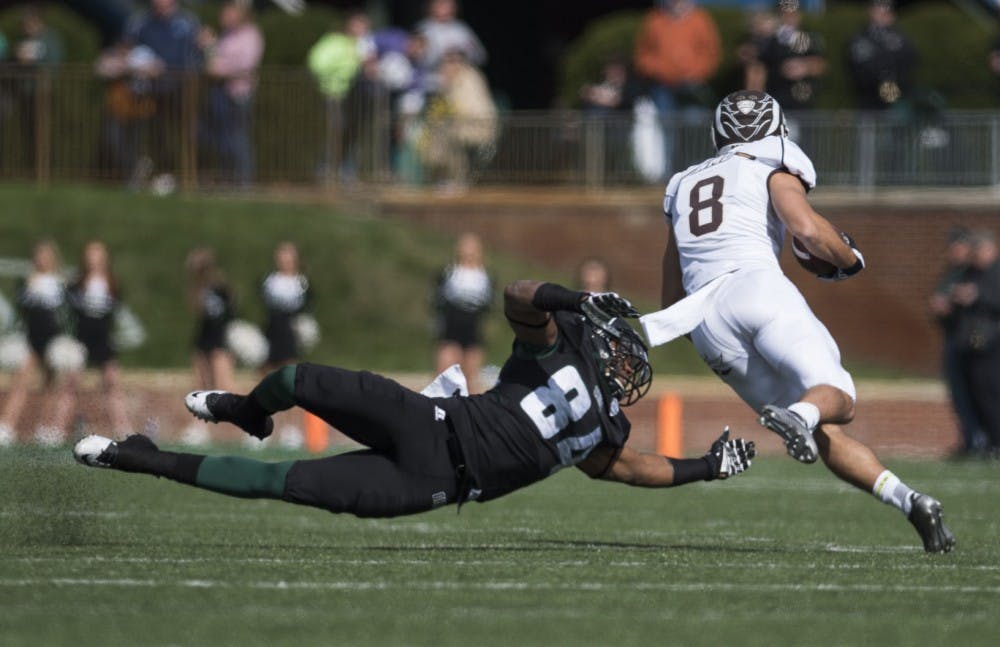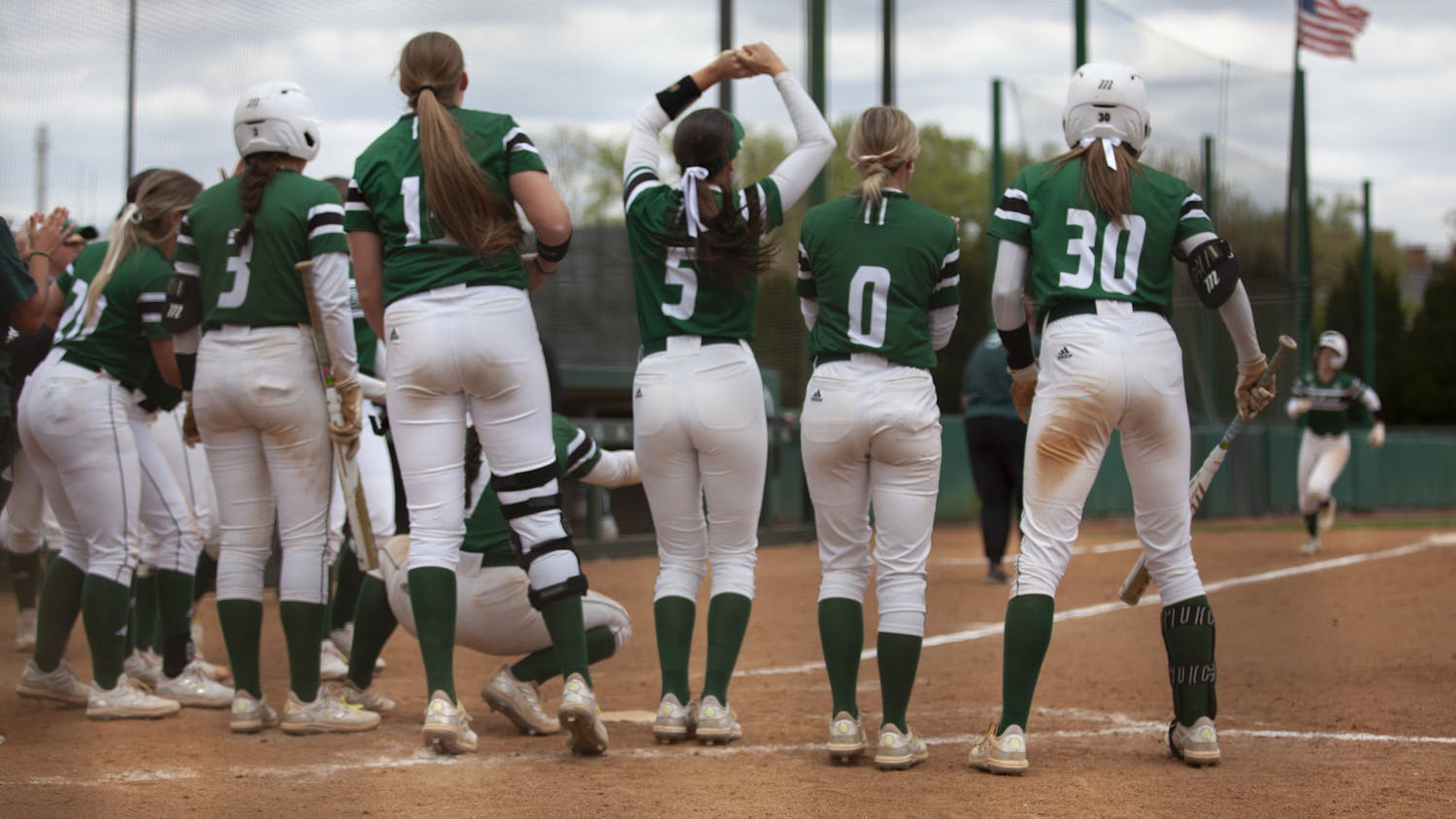Although concussions seem to be a central topic of discussion on the national platform in football, the Bobcats feel protected with their trainers and their alternative approach to tackling opponents.
Despite health issues surrounding concussions in the National Football League, some Bobcats have accepted the damage done from playing the sport.
For Ohio linebacker Chad Moore, concussions and injury are natural and come with the territory of the game.
“With all the latest news and stuff about how concussions are getting really serious, I mean, it’s scary," Moore said. "It’s also the game of football, and it’s not gonna change the way I play or anything like that."
Although Moore and the Bobcats are aware of the controversies within the NFL and its concussion protocol, Ohio has adopted some safer tackling techniques as a means of preventing such injuries by leading with the shoulders rather than head on.
“You have to watch the way you’re tackling," Moore said. "We’re always harping on hawk and roll tackles and stuff like that we got from the Seattle Seahawks."
The tackle Moore is referring to is one that is predominantly used by Seahawks coach Pete Carroll, who used a comparable approach during his tenure at the University of Southern California and has continued to employ it in his sixth year with Seattle.
{{tncms-asset app="editorial" id="d7e372e6-75ca-11e5-b102-dba92ad9f4eb"}}
The emphasis is put on taking the head out of tackling and focusing more on using just the shoulders to take down opponents. Carroll describes the concept of shoulder-leverage in a “hawk tackle” instructional video on the team’s website, a system deemed safe enough to be practiced without having to wear padding.
This approach was inspired by the tackling methods frequently used in rugby play, as Ohio defensive lineman Watson Tautuiaki said the Bobcats' trainers do a "great job" of treating injuries.
“No, I’ve never had (a concussion),” Tautuiaki said. “But I’ve talked to many people that have had one and many of them that have stopped playing football because of it was more thinking about the future, you know, instead of right then and there.”
The national spotlight is different, however, from what the Bobcats feel.
When the first official trailer of Concussion, an upcoming movie starring Will Smith was released to the media, the NFL was not pleased.
According to Forbes, the NFL accumulates more than $9 billion a year, making it one of the most financially successful sports leagues in the world. But recent news surrounding concussions has dented the league's ethics and image.
According to vox.com, “the NFL is not happy about Concussion — so much so that Sony actually edited the script to make it less antagonistic towards the league.”
The plot of the movie involves Bennet Omalu, a Nigerian doctor who discovers the presence of CTE — chronic traumatic encephalopathy — inside the brain of a deceased ex-NFL player, Mike Webster.
Omalu described the proteins in Webster’s brain as being “tangled” and reminiscent of a 90-year-old with severe Alzheimer’s disease. These proteins have been found in the brains of ex-professional football players, some as young as 45, who have died from their symptoms including dementia, depression and behavioral changes stemming from frequent head trauma.
CTE has been historically associated with boxers who endured severe and repeated blows to the head, but Omalu was the first to uncover it in the brain of a football player.
Webster, a former center for the Pittsburgh Steelers who died from a heart attack at age 50 in 2002, is one of several deceased ex-NFL stars Omalu observed. He also studied the brain of fellow Pittsburgh Steeler Terry Long, who died in 2005 from suicide by drinking antifreeze.
Omalu made the NFL aware of his findings but soon found himself a target of the league when the troubling news was made public.
“They went to the press," Omalu said in an interview with Frontline. "They insinuated I was not practicing medicine; I was practicing voodoo.”
Even with Omalu's overwhelming evidence, Ohio players understand the delicate balance between health and making a play.
"It’s a physical sport, it’s always been a physical sport, and I mean they’re making a bunch of changes in the NFL and how defenseless receivers and stuff like that," Moore said. "But I mean the way we play football is, you’re gonna go out, you’re gonna hit somebody and injuries are a part of the game."
@Thesideline2016
ly688912@ohio.edu
-- Charlie Hatch contributed to this report






